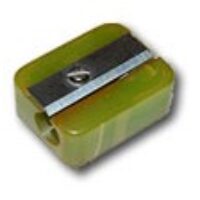When we toured Scotland we visited an ancient building with a curious design feature: it had a staircase that ran in a counterclockwise spiral, opposite to the standard design.
We were told that there are a number of such buildings in Scotland, all built by the same family. Apparently the Kerr family tended to have many left-handed sons, and they built a number of their castles and buildings (notably Ferniehirst Castle, in the 15th century) with counterclockwise spiral staircases, the idea being that a left handed person could defend them more easily (and perhaps also confuse the more common right handed enemies? although it seems that the latter would have some advantage on the attack).
Such a degree of custom design, geared to a genetic trait of one family, is interesting. It is also told that once they committed the architecture this way, they handled the fact that not all their fighting men were lefties by training those who weren’t to fight with the sword in their left hand anyway. Customize the building to the family, then customize the retainers to the building…






